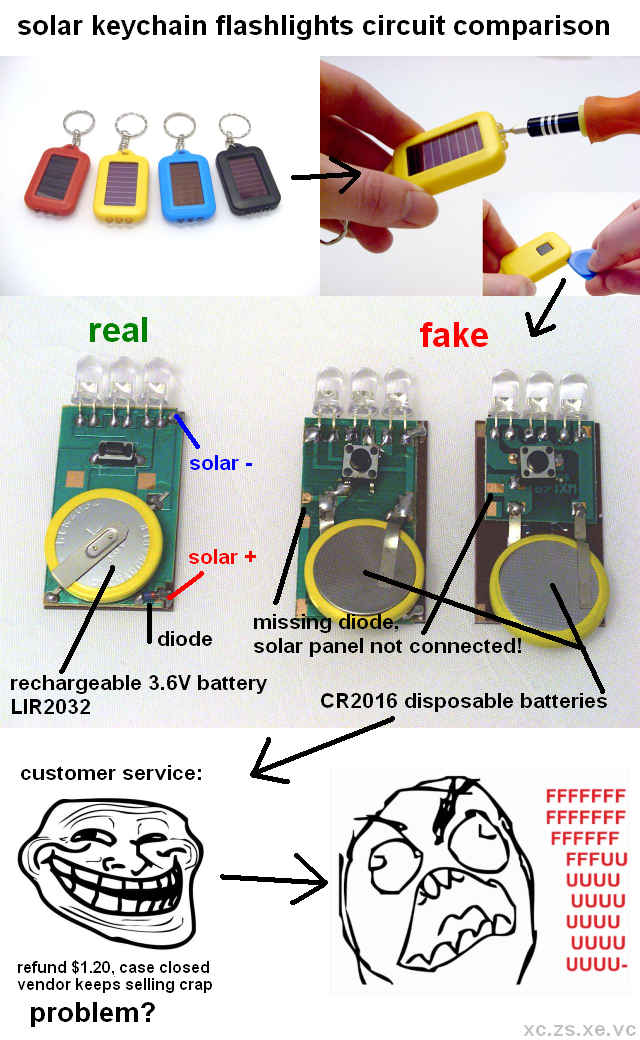Gerüchte um die Abschaltung von DVB-T zugunsten eines Nachfolgestandards gibt es schon seit Jahren, vor einiger Zeit wurde es dann konkreter: Multinationale Ballsportereignisse zeigten sich ja schon in der Vergangenheit als äußerst geeignet, um neue Generationen von Entertainment-Hardware unter das konsumfreudige Volk zu bringen.
Also mal spaßeshalber bei AliExpress den nächstbilligsten China-DVB-T2-Stick für $18 bestellt, nur so zum Spielen, ohne Garantie auf Empfangbarkeit der terrestrischen Ausstrahlungen in Deutschland. Seit dem 31.05.2016 gibt es nun auch den ersten Pilotmultiplex in den Ballungsräumen.
Es folgt die Essenz aus stundenlangem Wälzen von Bullshit-Bingo und mehr oder weniger hilfreichem technischen Wissen und Halbwissen, das man zu dem Thema finden kann:
DVB-T2 wurde als ETSI-Standard ursprünglich mit MPEG-4 (H.264) eingeführt
in Deutschland wird als Videocodec HEVC (H.265) genutzt, außerdem eine Modulation nach aktuellerer Spezifikation mit Multi-PLP (Physical Layer Pipes)
geschützte Wort-/Bildmarke "DVB-T2 HD" der Landesmedienanstalten als Zertifizierung für Geräte
Übertragung in 1080p50, öffentlich-rechtlich meist hochskaliert, EM-Spiele jedoch nativ in 1080p und damit momentan besser als über Satellit / Kabel!
momentan billigster China-Gadget DVB-T2-Stick von Astrometa: RTL2832P + R828D (diese Kombination klingt doch irgendwoher vertraut) + dazu noch ein externer Demodulator für DVB-T2, fertig ist der Stick für DVB-T2
Demodulator-IC von Panasonic: alte Version MN88472, unterstützt kein M-PLP Stick aufmachen: neue Hardware-Revision mit MN88473 drin? juhuu, dann fehlt jetzt nur noch die Software!
Klickibunti-Player TVR von Astrometa für Windows: immerhin halbwegs zum Scannen geeignet, will bei mir aber auch nach Installation von LAV Filters kein H.265 decodieren E drücken für Einstellungen Strg + Alt + Shift + D für erweiterte Hardware-Informationen
VLC unterstützt H.265 (und/oder den Demodulator!?) erst ab Version 3, also aktuelle Nightlies runterladen!
Im VLC dann nicht drauf reinfallen und "DVB-T2" wählen, sondern DVB-T!
What’s the frequency, Kenneth?
Schon bei der Einführung von DVB-T hielt man es seitens der Sendeanstalten offenbar nicht für nötig, die Sendefrequenzen rauszurücken. Neben detaillierten Übersichten zu FM-Radiofrequenzen in den Regionen und den Parametern für den SAT-Empfang wurden DVB-T-Nutzer damals lediglich darum gebeten, auf ihrem Klickibunti-Gerät “einen Suchlauf” durchzuführen.
Geht mit VLC leider nicht, muss auch nicht (man könnte aber sicher einfach ein Batch-/Shell-Skript basteln).
Eine Übersicht der Frequenzen für den DVB-T2 HD Pilotmultiplex (sowie viele weitere Informationen – bisher die mit Abstand hilfreichste Seite) gibt es bei dehnmedia.info.
Im VLC wird der Wert in kHz eingegeben, also z.B. 626000 für Hannover, 658000 für Hamburg etc.
Falls der Empfang in ländlicheren Regionen nur auf dem Dachboden wirklich brauchbar ist, kann man so im Gegensatz zur Klickibunti-Software immerhin auch mit wenigen Klicks einen Streaming-Server aufmachen und übers lokale Netz womöglich sogar direkt auf den Fernseher im Wohnzimmer streamen – falls man sowas besitzt.
Mir hat in den letzten Jahren jedenfalls ein DVB-T-Stick für sporadisches Fernsehen völlig ausgereicht.
Wenn die Privaten nun langfristig mit der DVB-T2-Plattform Freenet.TV planen, ihre Reichweite in den Ballungsräumen zu reduzieren und terrestrisch nur noch verschlüsselt zu senden, sollen sie das gerne tun.
Wenn man dann mittelfristig noch mit der analogen Kabel-Abschaltung rechnen kann, bliebe eigentlich nur die SD-Übertragung auf 19,2° Ost, die dem Deutschen Privatfernsehen überhaupt noch einen Rundfunk-Charakter geben würde – alles andere sind meiner Meinung nach längst Telemediendienste.
Möglicherweise ist das auch mittelfristig die Intention, die lästigen Bedingungen für eine Vollprogramm-Lizenz eines Tages endlich loswerden und über sämtliche Inhalte frei entscheiden zu können?
Vielleicht gibt es dann irgendwann wieder nur noch öffentlich-rechtliches Fernsehen in Deutschland, wie vor über 30 Jahren…




